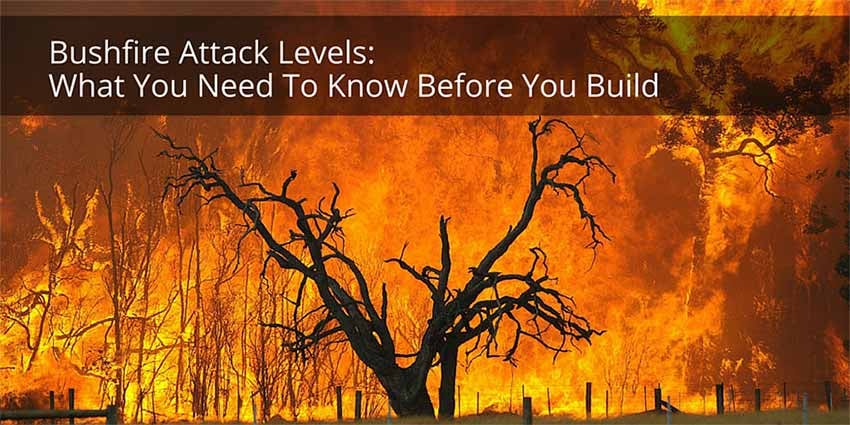 If you are building or extending a home in Victoria, one very important consideration is your property’s BAL – the Bushfire Attack Level.
If you are building or extending a home in Victoria, one very important consideration is your property’s BAL – the Bushfire Attack Level.
The regulations surrounding BAL were changed after the devastating 2009 Victorian bushfires, with the aim of improving the ability of new buildings to withstand bushfire attack.
So how do you discover your property’s BAL rating? And once you do, how will it impact on your choices when it comes to designing and building your new home?
BAL Explained
There are six BAL categories ranging from low to extreme risk. As the risk of bushfires impacting your property increases, so do the construction requirements for your new home.
All new homes and additions must have a BAL assessment before any planning or building permits can be issued. If you have an existing home, you can get a BAL assessment done, but you are not bound by the results and can choose to implement the recommended safety features or not.
Discovering your BAL
When you decide to build, one of the first things you’ll need to know is the BAL of your property. You can get an assessment done by an engineer of fire assessor when you buy a property and some building companies will include the BAL assessment as part of their pre-contract process.
There are also simple guides you can follow to assess your BAL on your own, but be aware that the result will be an indication only and will still require approval from a building surveyor.
How is BAL assessed?
The BAL assessment is based on a combination of factors relating to bushfire risk. These include your Fire Danger Index (FDI), the type of vegetation, your home’s proximity to it and the slope of the site.
The FDI is a measure of the probability of a bushfire starting, how fast it will spread and how difficult it will be to contain. Victoria has a simplified method where there are two levels: 50 in alpine areas and 100 elsewhere.
The vegetation on your site will be classified into one of seven types. These are forest, woodland, shrubland, scrub, mallee/mulga, rainforest or grassland.
To determine the distance between the vegetation and your home or proposed building site, a measurement is taken from the edge of the vegetation to the closest external wall or supporting post in the case of a car port or deck.
The slope of the land is important as it has a direct influence on the severity of a bushfire. For BAL, it’s the slope under the classified vegetation rather than the slope between the building and vegetation that is assessed.
The findings from these areas are then combined to determine your BAL rating.
What does my BAL rating mean?
Your BAL rating will impact on a number of factors when you are building. The six BAL ratings each have their own specifications and requirements attached to them.
- BAL-LOW: No special construction requirements.
- BAL-12.5 and BAL-19: Special requirements relating to external walls, windows and doors, roofs, verandahs and decks.
- BAL-29, BAL-40 and BAL-FZ: Special requirements for subfloor supports, floors, external walls, windows and doors, roofs, verandahs and decks.
These requirements include regulations on the type of materials that must be used (such as non-combustible timber or toughened glass) and the inclusion of extra safety features (like bushfire shutters or weather strips).
One important thing to keep in mind is that the BAL rating requirements are a variable cost upgrade for any new home project, regardless of builder.
Project costs cannot be fixed until the BAL rating has been completed, and BAL and energy ratings are the 2 main price variables on any new home project.
Knowing your BAL and building your dream home
Once you know your BAL rating you can start planning, designing and building the home of your dreams!
Throughout the process make sure that everyone involved – your architect, designer and builder - are all aware of the requirements associated with your BAL rating and that they work with you to get the best possible result.
Do you have any questions about BAL ratings? Leave your comment below and a member of our team will provide the answers.
RELATED LINKS:
https://en.wikipedia.org/wiki/Bushfires_in_Australia
https://en.wikipedia.org/wiki/AS3959
